
This task is related to Sub Claim C: Elapsed Time. Students are adding and subtracting time intervals on a number line. Standard 3.MD.1
- Subject:
- Education
- Mathematics
- Material Type:
- Activity/Lab
- Interactive
- Date Added:
- 07/17/2018

This task is related to Sub Claim C: Elapsed Time. Students are adding and subtracting time intervals on a number line. Standard 3.MD.1
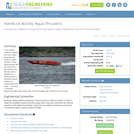
In this activity, students construct their own rocket-powered boat called an "aqua-thruster." These aqua-thrusters will be made from a film canister and will use carbon dioxide gas produced from a chemical reaction between an antacid tablet and water to propel it. Students observe the effect that surface area of this simulated solid rocket fuel has on thrust.
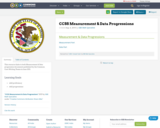
This resource links to both Measurement & Data progression documents published by the Common Core Writing Teams in June 2011.
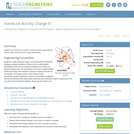
Students use balloons to perform several simple experiments to explore static electricity and charge polarization.
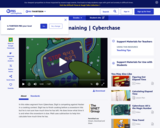
In this Cyberchase video segment, Matt uses subtraction to help Digit figure out how much time he has left in a cooking contest with Hacker.
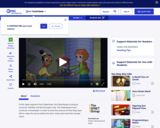
The CyberSquad must construct a clock of sorts in order to keep track of the amount of time they have to rescue Dr. Marbles in this video segment from Cyberchase.
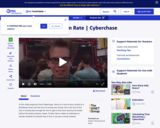
Harry estimates how long it will take him to get to the front of a long ticket line in this Cyberchase video segment.
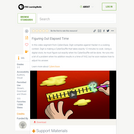
In this video segment from Cyberchase, through addition and regrouping in base sixty, Matt helps Digit figure out what time his CyberSoufflŰ__ŰÖ will be done.
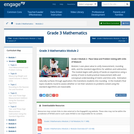
Module 2 uses place value to unify measurement, rounding skills, and the standard algorithms for addition and subtraction. The module begins with plenty of hands-on experience using a variety of tools to build practical measurement skills and conceptual understanding of metric and time units. Estimation naturally surfaces through application; this transitions students into rounding. In the modules final topics students round to assess whether or not their solutions to problems solved using the standard algorithms are reasonable.
Find the rest of the EngageNY Mathematics resources at https://archive.org/details/engageny-mathematics.

In this lesson, students explore the states of matter by creating ice cream in a bag. They'll observe how liquids transform into solids through the process of freezing, while also learning about the properties of solids and liquids. By manipulating ingredients and observing temperature changes, students will gain a hands-on understanding of the scientific principles behind phase transitions. This activity encourages curiosity and critical thinking as students engage with fundamental concepts in a fun and delicious way.

In this math escape room lesson, students work in teams to solve a series of math puzzles and riddles to "escape" a themed room. Each puzzle is designed to reinforce key math concepts such as fractions, geometry, and basic algebra. As students solve each problem, they receive clues that lead them to the next challenge, promoting critical thinking and collaboration. The activity concludes with a debrief where students discuss the strategies they used and the math skills they applied.

(Nota: Esta es una traducción de un recurso educativo abierto creado por el Departamento de Educación del Estado de Nueva York (NYSED) como parte del proyecto "EngageNY" en 2013. Aunque el recurso real fue traducido por personas, la siguiente descripción se tradujo del inglés original usando Google Translate para ayudar a los usuarios potenciales a decidir si se adapta a sus necesidades y puede contener errores gramaticales o lingüísticos. La descripción original en inglés también se proporciona a continuación.)
El módulo 2 utiliza el valor del lugar para unificar la medición, las habilidades de redondeo y los algoritmos estándar para la adición y la resta. El módulo comienza con mucha experiencia práctica utilizando una variedad de herramientas para desarrollar habilidades prácticas de medición y comprensión conceptual de las unidades métricas y de tiempo. La estimación surge naturalmente a través de la aplicación; Esto hace transición a los estudiantes al redondeo. En los temas finales del módulo, los estudiantes redondean para evaluar si sus soluciones a los problemas resueltos utilizando los algoritmos estándar son razonables.
Encuentre el resto de los recursos matemáticos de Engageny en https://archive.org/details/engageny-mathematics.
English Description:
Module 2 uses place value to unify measurement, rounding skills, and the standard algorithms for addition and subtraction. The module begins with plenty of hands-on experience using a variety of tools to build practical measurement skills and conceptual understanding of metric and time units. Estimation naturally surfaces through application; this transitions students into rounding. In the modules final topics students round to assess whether or not their solutions to problems solved using the standard algorithms are reasonable.
Find the rest of the EngageNY Mathematics resources at https://archive.org/details/engageny-mathematics.
![OREGON MATH STANDARDS (2021): [3.GM]](https://img.oercommons.org/160x134/oercommons/media/courseware/lesson/image/13138_ODE_Math_Logo_2018-H_color_BvjqVNy.png)
The intent of clarifying statements is to provide additional guidance for educators to communicate the intent of the standard to support the future development of curricular resources and assessments aligned to the 2021 math standards. Clarifying statements can be in the form of succinct sentences or paragraphs that attend to one of four types of clarifications: (1) Student Experiences; (2) Examples; (3) Boundaries; and (4) Connection to Math Practices.
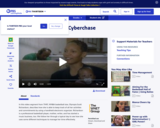
In this video segment from TV411, WNBA player Olympia Scott Richardson discusses her techniques for effective time management.
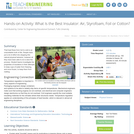
That heat flows from hot to cold is an unavoidable truth of life. People have put a lot of effort into stopping this natural physical behavior, however all they have been able to do is slow the process. Student teams investigate the properties of insulators in their attempts to keep cups of water from freezing, and once frozen, to keep them from melting.
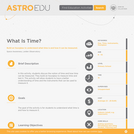
In this activity, students discuss the notion of time and how time can be measured. They build an hourglass to measure time and test it. This activity will allow students to have a better understanding of time and the instruments that can be used to measure it.